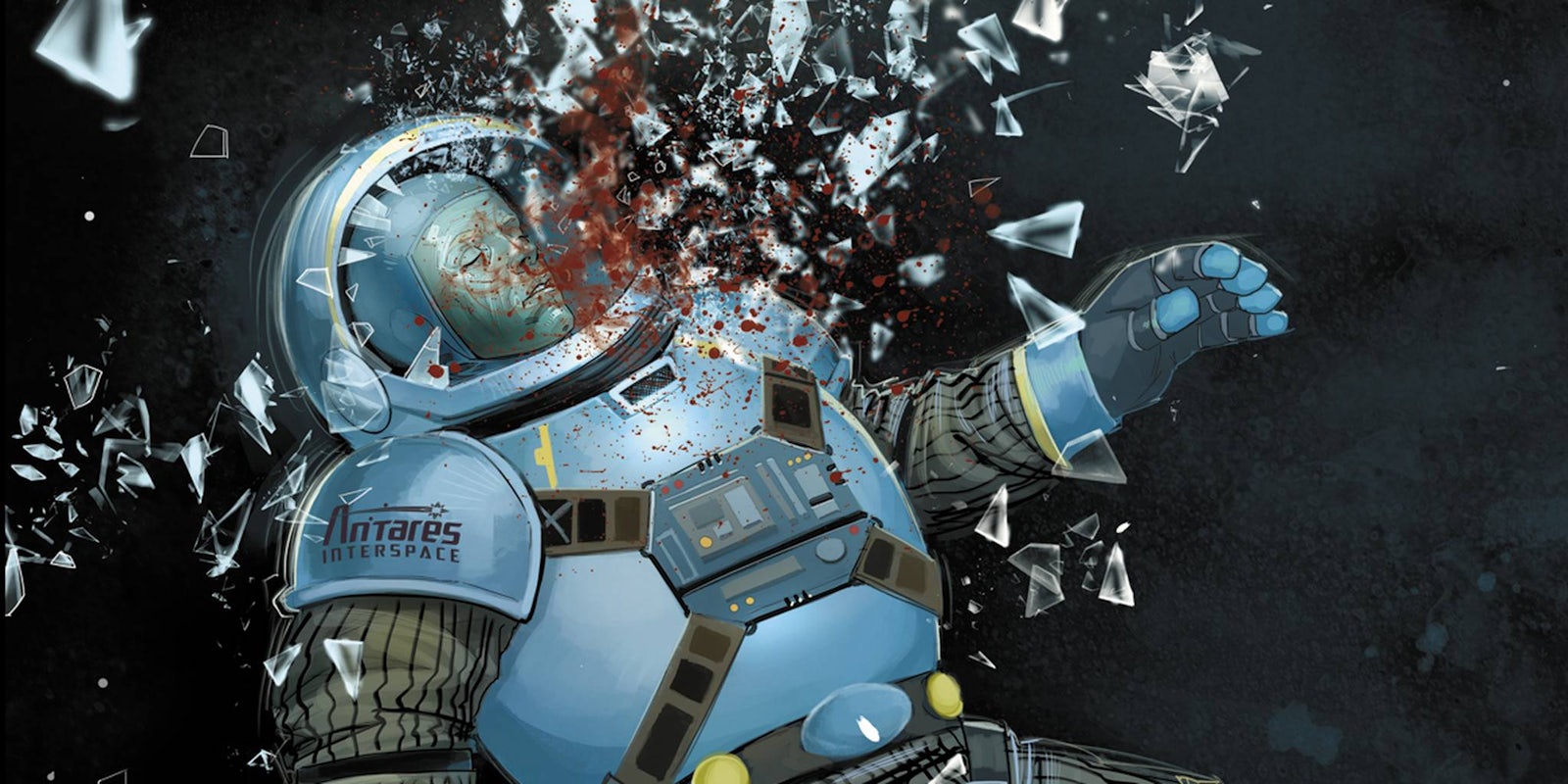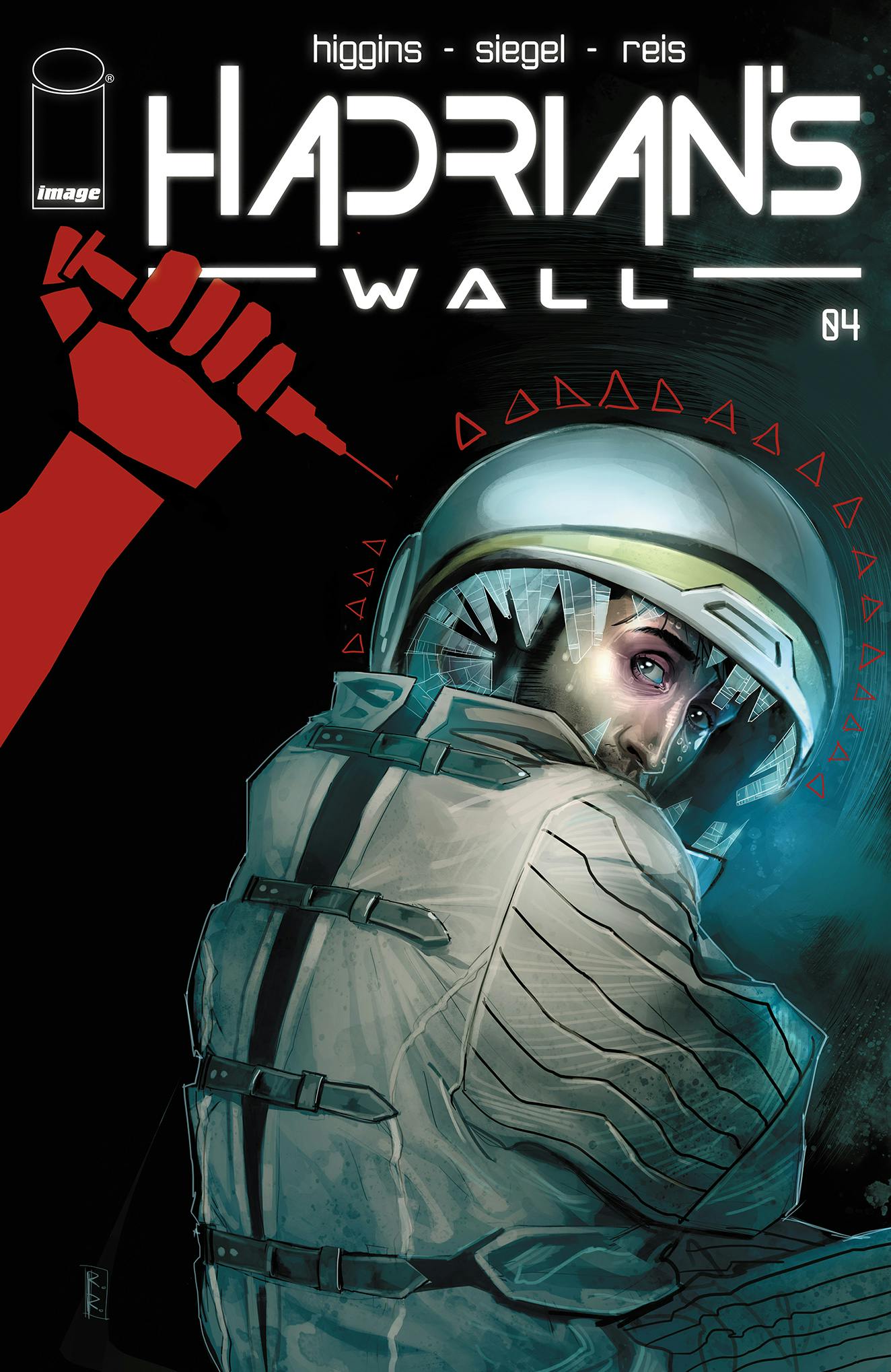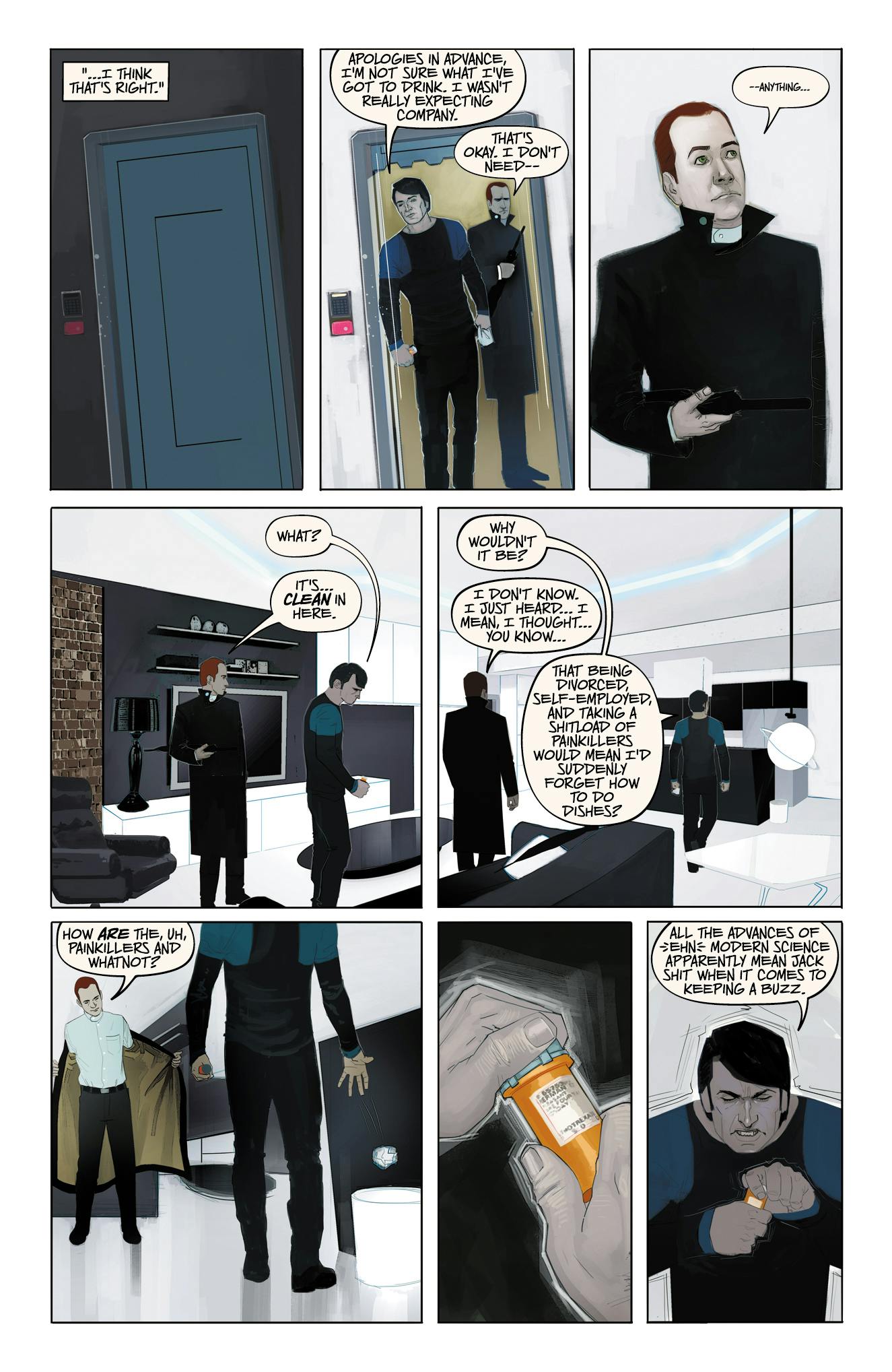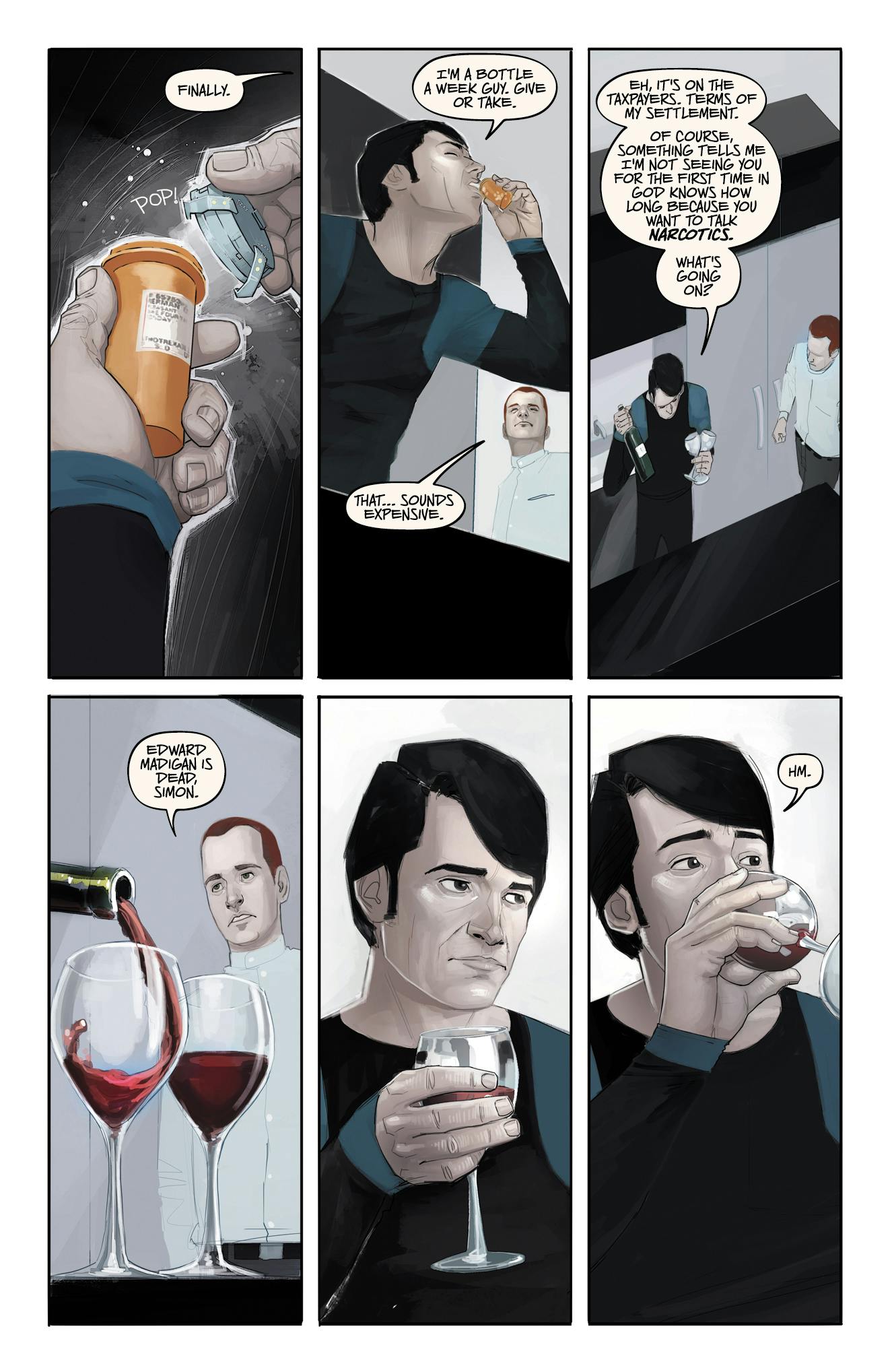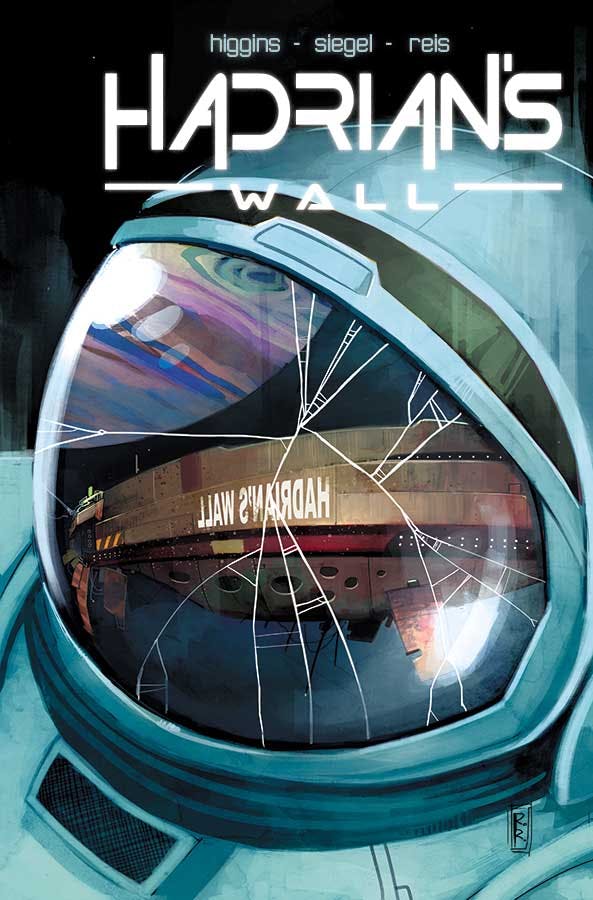Set in 2085, Hadrian’s Wall combines a classic noir murder mystery with retrofuturistic sci-fi, calling back to movies like Alien and Blade Runner with its spacefaring Cold War setting.
Created by writers Alec Siegel and Kyle Higgins and artist Rod Reis—the team behind the long-running superhero union comic C.O.W.L.—this eight-issue miniseries follows an investigator’s attempt to solve a murder onboard the spaceship Hadrian’s Wall.
Hired to look into the unexplained death of an astronaut, former police detective Simon Moore unearths hidden rivalries between crew members, and (in true noir fashion) comes face-to-face with his embittered ex-wife.
The world of Hadrian’s Wall is heavily influenced by Cold War politics and the aesthetic of 1980s science fiction, especially cinema. Speaking to cowriter Kyle Higgins, we learned how his background as a filmmaker impacted the story of Hadrian’s Wall, and what we can expect from this comic’s twist on the noir genre.
Could you tell me a bit about the ‘80s-influenced setting? The retrofuturistic Cold War details are an interesting touch.
Kyle Higgins: First and foremost, Alec and I are big fans of 1970s and ’80s sci-fi films—Blade Runner, Outland, Alien, Aliens, The Abyss. As a filmmaker, I dream of shooting something in that vein one day, something that plays more in the “grunge” sci-fi space. Aesthetically, we felt like Hadrian’s Wall would be a cool opportunity to do something like that, as the story we’re looking to tell focuses on a locked-room murder mystery, where everyone on board the ship is a suspect.
Our main character, Simon Moore, is an investigator who’s hired to rubber stamp the death of an astronaut who dies in the opening of issue one. And while Simon initially takes the job out of a sense of Schadenfreude—the deceased is not only an ex-friend of Simon’s, but was also married to Simon’s ex-wife—he quickly realizes that the situation is even murkier than we thought. Plus, in addition to trying to figure out this case, Simon will also have to navigate his own failed marriage, as his ex-wife, Annabelle, is both on board the ship and also a suspect.
The second big factor is the Cold War element. I’m a big Cold War guy, and when we started mining the failed relationships thematic, the backdrop of a new interstellar Cold War felt like a nice element that would allow us quite a bit of thematic and emotional mileage.
And then, the third aspect of all this was that we were looking for a way to separate ourselves on the stands. It’s a crowded marketplace, with a lot of really great sci-fi books… many of which are also published by Image. So, the idea of a retro-futre world—i.e. 2085 as envisioned in 1985—felt like it could be really unique, especially through the lens of the unbelievably talented Rod Reis—and give us an opportunity to do something quite different.
Were there any particular movies or comics that influenced you and your creative partners while working on this book?
For sure. The films I just mentioned, certainly, as well as things like The Fifth Element, Jodorowsky’s Dune, books like Heavy Metal, Brian Azzarello and Eduardo Risso’s Spaceman, anything and everything from Brubaker and Phillips… there’s a lot.
Noir murder mysteries are such a beloved genre. Did you try to subvert aspects of familiar noir tropes, or is Hadrian’s Wall more of a direct homage?
We try to subvert everything we do. The book is a love letter in many ways, but it’s also got some big twists and turns—including why Simon takes the case—that I haven’t really seen before. And ultimately, locked room murder mysteries are character studies. Who’s our crew? What secrets are they keeping? What type of person takes a job working on a survey ship in the far reaches of space, anyway?
There’s Captain Drekker, who’s skeptical of Simon and the whole investigation. However, is it because he’s hiding facts? Or because he doesn’t trust the company he works for? There’s Franklin, the geologist, who dislikes authority, resents the investigation, and also hated the victim—Edward. Then there’s the ship’s physician, Dr. Kharlamov, who didn’t carry out a proper autopsy, and Selina, the ship’s astrophysicist. They’re both willing to help Simon, but he’s not sure where their allegiances really lie. And finally, there’s Annabelle, who has to deal with the fact that her husband is dead and her ex-husband is the one tasked with investigating. Whether she’s dodgy out of grief, or because she’s trying to avoid rehashing her past with Simon, or for other reasons entirely… she and Simon are the central relationship of the book.
But, yeah. The more comics I write, the more I obsess about subverting. On this, Alec and I are constantly looking for new ways to tweak things, from plot points and playing with expectations, down to common turns of phrases.
Hadrian’s Wall #1 comes out on Sept. 14.
